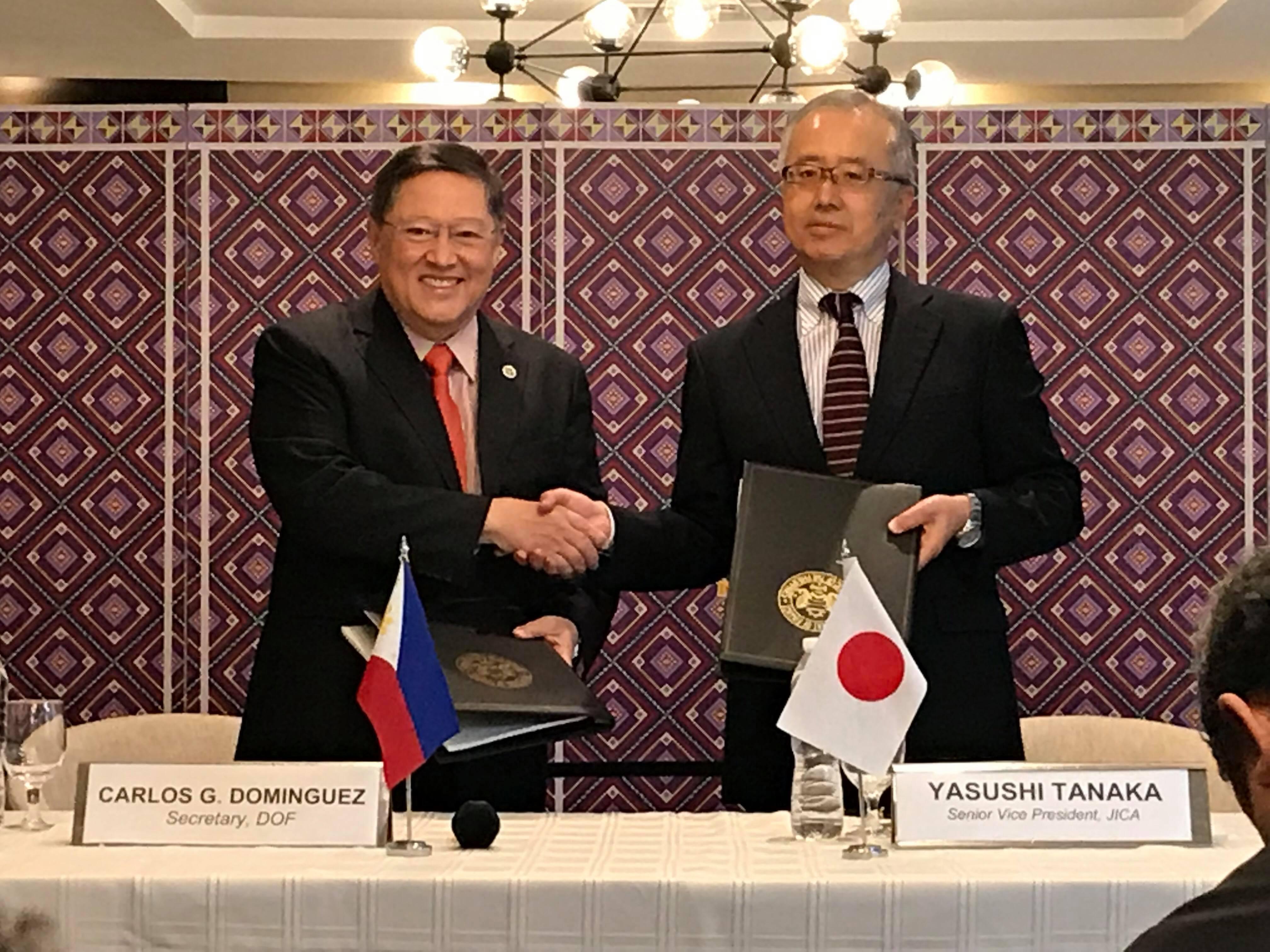PHL, Japan sign P18-B loan deal for MRT3 rehab

The governments of Japan and the Philippines signed on Thursday an P18-billion loan agreement for the maintenance and rehabilitation of the Merrill Rail Transit Line 3 (MRT3).
Finance Secretary Carlos Dominguez III and Japan International Cooperation Agency (JICA) Senior Vice President Yasushi Tanaka signed the loan deal at the Department of Finance office in Manila.
The total cost of the rehabilitation is P21.96 billion, of which P18.76 billion is official development assistance (ODA) loan from JICA. The balance of P3.19 billion will be funded locally.
The P18.76-billion loan—roughly ¥38 billion—carries an interest rate of 0.1 percent per year, with a repayment period of 28 years after a grace period of 12 years.
MRT-3, which has “degraded to a sad state” and “brought our commuters unspeakable hardship” to the point of becoming “a symbol of where our country fails” will not only be rehabilitated but its operations also expanded and modernized with the help of this ODA loan from Japan, the DOF said in a separate statement, quoting Dominguez.
Japan’s Sumitomo-Mitsubishi Heavy Industries are back and in charge of the maintenance and rehabilitation of the MRT3.
Sumitomo-Mitsubishi Heavy, as the original MRT3 maintenance contractor, designed and built the mass rail transit system, and served as its maintenance contractor in the first 12 years of operations.
“The MRT3 rehabilitation project will address the problem in the most comprehensive fashion. It will rehabilitate them all, including replacement of worn out tracks, upgrading the train signaling system, and general overhaul of the 72 15-year-old LRVs (light rail vehicles),” Dominguez said.
“We will increase the number of train sets from 15 to 20, increase the speed to 60 kilometers per hour, and slash the time to approaching trains to 3.5 minutes,” the Finance chief noted.
Rehabilitation program
The loan facility will pay for the following items under the rehabilitation program:
- track replacements
- general overhaul of trains
- power supply system
- overhead catenary system
- CCTV system
- radio and public address system
- signaling system
- road-rail vehicles
- depot equipment
- elevators and escalators
- other station building equipment
The rehabilitation project will take 43 months—rehabilitation works in the first 26 months, and general overhaul of the 72 light rail vehicles in the next 17 months.
“This is good news for Filipino commuters. So they will have improved access to safe and reliable transportation, while also meeting the Philippine government’s priorities to reduce traffic congestion in Metro Manila, attract investments, and improve the quality of life of the people,” Tanaka said.
“We hope that the rehabilitation will be completed as soon as possible and more users use the MRT3 safely and comfortably,” he added.
Full swing
On the sidelines of the signing ceremony, Transportation Undersecretary for Railways Timothy John Batan said the rehabilitation works goes into full swing in January but the transition process actually started in mid-October.
Engineering teams from Sumitomo-Mitsubishi Heavy Industries have been deployed since October 15 to inspect the spare parts, the depot, and the entire railway system.
“From the eighth to the 14th month, all the way to the 26th month gradual na ‘yung pag-increase: magi-increase ‘yung speed, dadami ‘yung trains, baba ‘yung headway. So hanggang umabot tayo sa 26th month, unti-unti nating aabutin ‘yung ating design capacity which is up to 20 operating trains, reduction of headway to 3.5 minutes, and increase of speed to 60 kilometers per hour.”
“Our program is that after 26 months we will start to feel the MRT3 returning to its original condition. Currently, we are running at 30 kph, our headway is anywhere from 7-10 minutes, tumatakbong train is 15 train sets,” Batan said.
The Metro Rail Transit Corp. (MRTC) consortium counts as members these companies:
- Ayala Land Inc.
- Anglo-Philippine Holdings Corporation
- Fil-Estate Management, a subsidiary of the Sobrepena family’s property and pre-need empire
- Ramcar Inc.
- Greenfield Development Corp., the investment arm of pharmaceutical industry leader, United Laboratories
The right contractor
MRTC is the builder of the MRT3, with contractor Sumitomo Corp. and Mitsubishi Heavy as contractors.
The mass rail transit system started operating in 2000, with the government’s lease and its role as the operations partner of MRTC commencing that same year.
When the lease expires after 25 years, the government will have full control of the project.
MRTC chairman Robert John Sobrepeña told GMA News Online the company still owns the MRT3 system.
MRTC’s proposal also involves extending “onerous” terms of the Build-Lease-Transfer Agreement beyond 2025 and into 2040, the department said.
In a separate statement on June 14, Sobrepeña said Sumitomo is the right company to rehabilitate and maintain the MRT3.
From servicing 500,000 passengers a day in 2012, MRT3 was able to accommodate only around 388,000 passengers a day in 2017 owing to the system’s deteriorated condition.
Train stoppages, system failures, engine breakdowns, and faulty air conditioning units area common experience among MRT3 commuters, according to DOF. —VDS, GMA News



